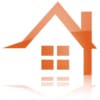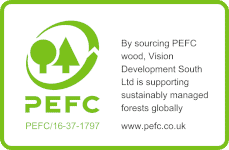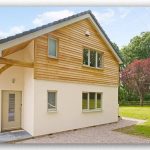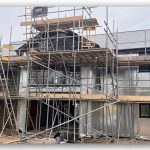The Future Homes Standard and Timber Frame Construction: Building a Sustainable Tomorrow
The Future Homes Standard and Timber Frame Construction: Building a Sustainable Tomorrow
The construction industry is undergoing a major transformation, driven by the pressing need to address climate change and reduce carbon emissions. One of the most significant regulatory shifts is the introduction of the Future Homes Standard (FHS), which aims to ensure that all new homes built in the UK from 2025 are highly energy-efficient and capable of achieving net-zero carbon emissions. As the built environment is responsible for a significant portion of global carbon emissions, this standard is a crucial step toward a sustainable future. Among the construction methods gaining attention for their sustainability credentials, timber frame construction stands out as a natural and highly effective partner in helping to meet the FHS requirements. Let’s explore how timber frame homes can help shape the future of housing while supporting the drive toward a carbon-neutral world.
Meeting the Future Homes Standard with Timber Frame
The Future Homes Standard aims to significantly reduce carbon emissions in new homes, with a target of at least a 75% decrease compared to current standards. Timber frame construction is perfectly positioned to help achieve this goal:
- Lower Carbon Footprint: Timber is a renewable resource that sequesters carbon during its growth, making it a net carbon sink. By using timber in construction, we’re effectively storing carbon within the building structure, offsetting emissions associated with manufacturing and transportation.
- Energy Efficiency: Timber frame homes excel in thermal performance. The natural insulating properties of wood help regulate indoor temperatures, reducing energy consumption for heating and cooling. Our timber frame systems can achieve U-values as low as 0.14 W/m²K, surpassing the expected requirements of the new Part L regulations.
- Airtightness: The Future Homes Standard 2025 requires an air-tightness level of below 5m³/h.m² @ 50 Pa in new-build homes. Timber frame construction is excellent at assisting with air tightness because its precise, engineered components, combined with high-quality insulation and sealing techniques, create a well-sealed structure that minimizes air leakage.
Why Choose Timber Frame for Net Zero Homes?
- Sustainability: Timber is a renewable resource when sourced responsibly. At Vision, we use only sustainably sourced materials, ensuring our construction practices support long-term forest health.
- Speed of Construction: Our prefabricated timber frame systems allow for faster on-site assembly, reducing overall construction time and associated emissions.
- Design Flexibility: Timber frame construction offers great design versatility, allowing for open floor plans, large windows, and creative architectural designs without compromising on energy efficiency.
- Future-Proofing: As requirements tighten towards 2025 and beyond, timber frame construction requires minimal changes to wall build-ups, ensuring consistent builds without significant loss of floor area.
- Embodied Carbon: Timber has lower embodied carbon compared to traditional materials like concrete and steel, contributing to overall carbon reduction in the construction process.
At Vision Development, we’re committed to helping our clients meet and exceed the Future Homes Standard. Our range of timber frame options, including closed panels, are designed to achieve excellent thermal performance and energy efficiency. As we move towards a net zero future, timber frame construction stands out as a sustainable, efficient, and forward-thinking solution. Choose Vision for your next project, and let’s build a greener, more sustainable future together. Contact us to discuss how our timber frame solutions can help you meet the Future Homes Standard and beyond.













